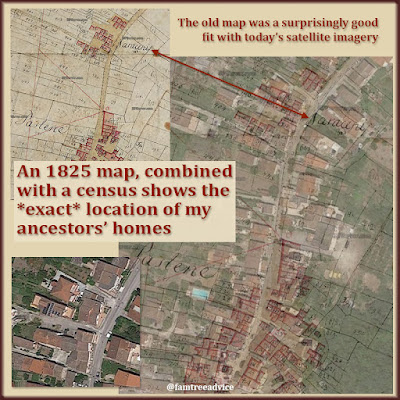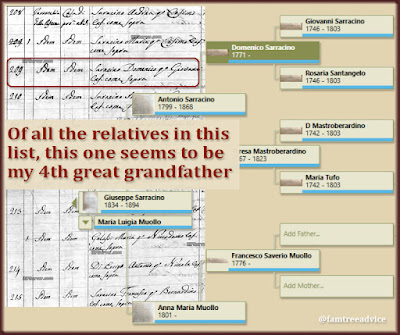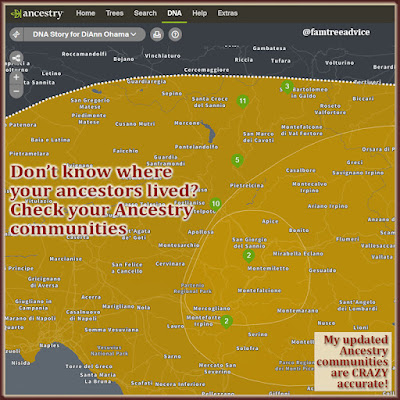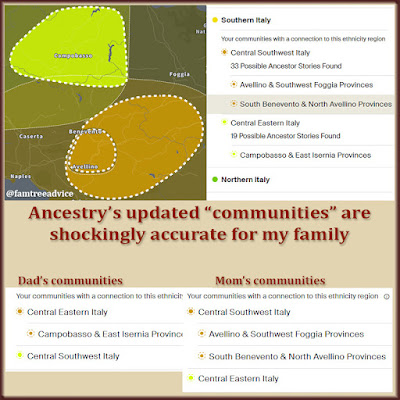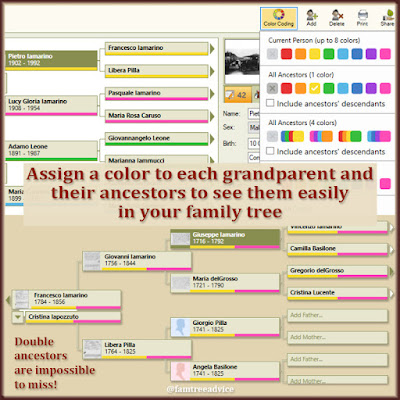One of my genealogy dreams came true on March 16, 2022. The New York City Municipal Archives put all their vital records online for free! I've visited the archives 3 times to view my family documents. I had to pay a small fee for a hard copy of the most important ones.
For years I've been making note of the document numbers for dozens of New York City records that were not online. Look for the numbers when you see the NYC vital records indexes in your Ancestry.com search results. Using those numbers, I've downloaded 88 vital records so far.
A New Family Tree Research Tool
And that brings me to today's topic. I downloaded documents for relatives who I knew were part of a conversation I'd had with someone in the past. It may have been someone who emailed me or who contacted me on Ancestry. But who was it? How can I share this important document with them?
I knew it was time for yet another spreadsheet!
Two years ago, Ancestry was rolling out an update to its messaging system. People who already had the new system didn't like it. So I began copying my earliest conversations into a Word document. The idea was to make all my conversations easily searchable. I hadn't finished copying when the new messaging format arrived.
 |
| This database is a simple way to find out who wrote to you about which branch of the family tree. |
This time I'll make things simpler. Instead of copying entire conversations, I'll categorize the messages in a spreadsheet. I'm calling mine "genealogy-correspondence.xlsx." My spreadsheet has 6 column headings:
- Surname—the main last name(s) we were discussing
- Town—this helps me keep our possible connection straight
- Correspondent—their name, email address
- Date—when the conversation began
- Facts—important facts to help identify who we're talking about
- Platform—where the conversation took place
Building and Using the Database
Whenever I launch a new genealogy practice like this, I don't let the size of the task overwhelm me. I'll start by adding my most recent Ancestry conversations. Then I'll look for ones I need—like the person who wrote to me about a cousin who died when her stove caught fire. (I have her death certificate now.) Then I'll add more and more whenever I have time.
The beauty of this database is you won't lose track of old connections that your family tree needs today. I'm sure as you review your messages, you'll find forgotten connections you made long ago.
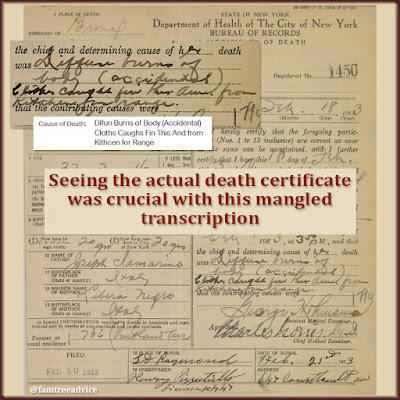 |
| When I found this death record, I knew I had to share it with the person who remembers this story. But who was that? |
Can you remember all the genealogy conversations you've had with potential relatives? I can't! I know you'll rediscover a lot of forgotten clues as you build your database.
And the best thing about this spreadsheet is you can sort by any column and search for every mention of a name or place. The next time you find something that makes you wonder who else should know about it, check your correspondence database.
My focus with this genealogy blog is on applying business practices to genealogy. That type of discipline pays off for me every single day. This is bound to be one more tool that will be indispensable to us all.
And speaking of genealogy tools:
